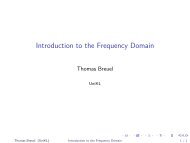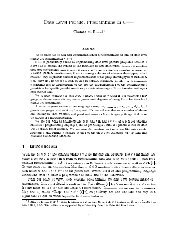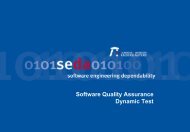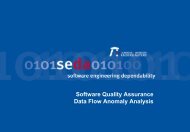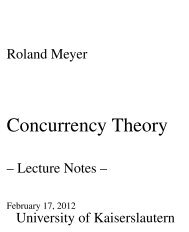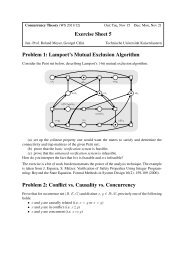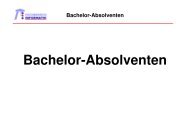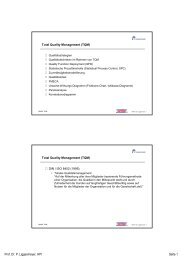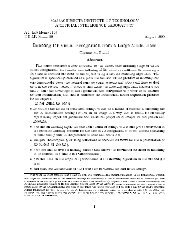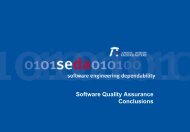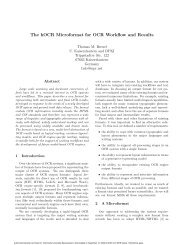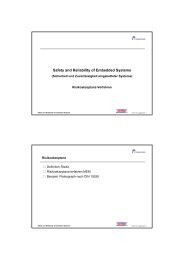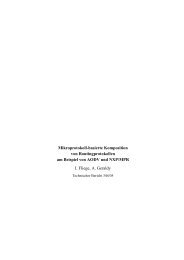Printing Technique Classification for Document Counterfeit Detection
Printing Technique Classification for Document Counterfeit Detection
Printing Technique Classification for Document Counterfeit Detection
You also want an ePaper? Increase the reach of your titles
YUMPU automatically turns print PDFs into web optimized ePapers that Google loves.
(a)(b)Figure 1. Sample letter from different inkjetprintouts (top) and laser printouts (bottom).Laser printed letter typically show sharpercontours than inkjet printed ones.2.1 Per-Letter <strong>Classification</strong>A canonical choice <strong>for</strong> getting a hint on the genuinenessof a printed document is to study its creation process, inparticular the type of printer that has been used. However,little research has been done in this area so far.One exception are studies on the dot patterns of inkjetprinters by Yamashita et al.[3]. Tchan analyzed the sharpnessof image features to detect manipulations of existingprintouts[4]. A more specialized solutions is proposed e. g.by Akao et al., who search <strong>for</strong> spur marks, which inkjetprinters commonly leave on the paper during the printingprocess[5].The approach proposed in this paper is to generically detect<strong>for</strong>geries by using a per-letter classification of the printingtechnique. It relies on the fact that <strong>for</strong> different printershave different visual characteristics, especially in the edgearea of the letters. From the grayscale distribution in thisimage area, it can be decided <strong>for</strong> each letter in the documentwhat kind of printer created it. In parts, this is similarto Tchan[6], but there the target was to distinguish differentprinter models, which required details knowledge on thecreation of the original document, access to the machines tobe detected, and also specialized hardware <strong>for</strong> the imageacquisition. The method we propose is more generic, it ispossible to target a wide range of different documents types.Another advantage is, that the method does not require anyspecific hardware but can work with a standard consumerimaging device like a scanner or a digital camera.The suitability of the proposed technique to counterfeitdetection is backed up by <strong>for</strong>ensic results on how document<strong>for</strong>geries are usually done these days: only a very smallfraction of <strong>for</strong>gers are professionally equipped with an expensivelaboratory of advanced printing machinery. Instead,the vast majority of <strong>for</strong>geries are done on an ordinary homePC with a scanner and a printer. This includes the replacementof passports photographs by inkjet printouts, and scanningbus-tickets and printing copies on a color laser printer.A surprisingly large number of <strong>for</strong>geries is even simplyFigure 2. Enlarged contour region of a inkjetprinted (a) and a laser printed character (b).The laser image shows a sharper black-towhitetransition and fewer ink/toner dropletsoutside of the black contour.done by hand, e. g. adding or manipulating digits and aninvoice. It is characteristic <strong>for</strong> these kinds of <strong>for</strong>geries, thatthe <strong>for</strong>ged in<strong>for</strong>mation relies on a different printing techniquethan the original. This can be the case that the wholedocument was created using a wrong technique, like <strong>for</strong> thebus-ticket, or that some parts have different, like on the invoice.Both scenarios can be detected by the proposed method:if the original printing technique of a document is known, itcan as a whole be validated against the detection techniquein the document to be checked. Additionally, documentswhich show only few positions of different printing techniquethan the main body show strong evidence of a manipulation.3 <strong>Printing</strong> <strong>Technique</strong> <strong>Classification</strong>The proposed method consists of four steps: preprocessing,feature extraction, classification and visualization,which we describe in the following in more detail.3.1 Image PreprocessingFor a more compact description, we leave out the moreparts of image acquisition and assume that the system isprovided with high resolution image material. Since we aredealing with document images, we usually cannot rely oncolor in<strong>for</strong>mation, and we there<strong>for</strong>e assume the material tobe in 8 bit grayscale <strong>for</strong>mat. We identify individual objectson the page by a connected component analysis on a binarizedversion of the image. Of the connected componentswe keep all which have roughly the right size and aspectratio to be characters and extract the classification featuresfrom them.3.2 Feature ExtractionWhen studying high resolution scans of different printertypes, sharp edges are the most interesting regions to distinguishbetween them visually. Here, the techniques differ,



